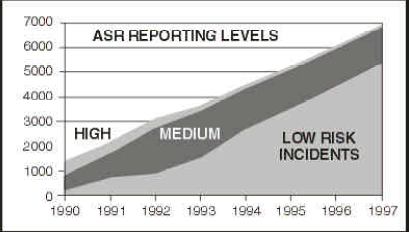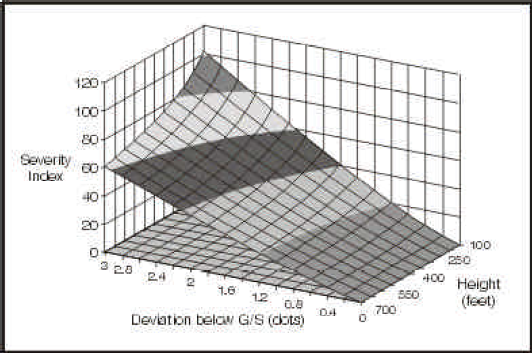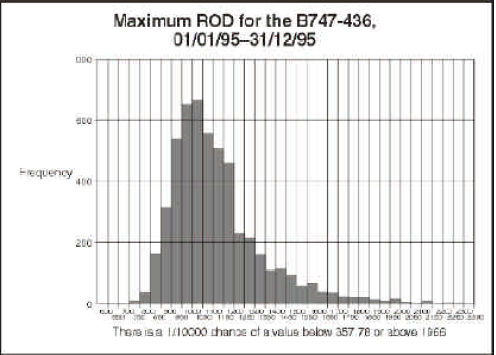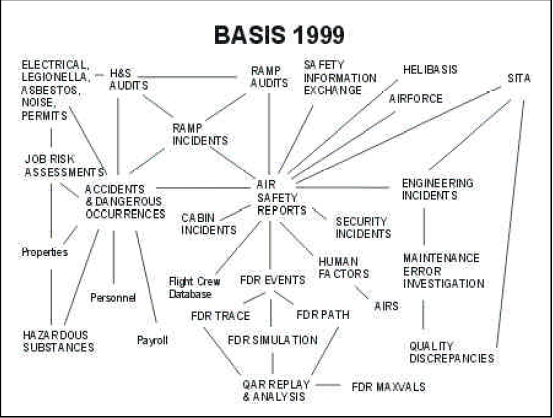Abstract
Information systems are a widely used tool to ease company operations by relying on the efficiency information technology brings to system operations. This study identifies that British airways which are heavily reliant on its information technology system to avert air traffic accidents need to improve their data input systems (by allowing open input of data by workers) and data protection systems (to prevent unauthorized access of information). These recommendations are made after analyzing the history and objectives of its safety information systems and how the systems function. Nonetheless, the study also concludes that apart from the system’s high logistical costs, safety concerns, and data collection concerns, it covers most areas of its operations effectively.
Introduction
The use of Information systems is quickly being globally accepted as one of the most fundaments processes to business operations. There is nothing complicated in using information systems because it operates on the principle of incorporating information technology in the operations of an organization (Kriz, 2010, p. 148). Information systems seek to support operations, management, and decision-making at all levels of the organization but from a more advanced platform, information systems are used to refer to the interaction of people, algorithmic processes, data, and technology (Hart 2007, p. 247). In the analysis of information systems, it should not be perceived as some form of theoretical concept which is best applied in literature excerpts because there is a need to understand the fact that the paradigm seeks to merge people processes to support an organization’s activities. This means that information system is a practical undertaking and to show evidence of this, this study will analyze, investigate and make recommendations on how information systems can be used in a practical setup. Specifically, the study will focus on British Airways which has taken huge strides in using information systems to improve different areas of its operations, including customer safety, services, and the likes.
British Airways is the national flight carrier of the United Kingdom (UK) and has been in operation since 1974 (Swarbrooke 1999, p. 349). The company is currently the largest airline company in the UK and is majorly based in its main hub at London’s Heathrow airport. British Airways currently holds a big stake in one of the world’s largest corporate alliances, one world alliance, where the airline company has merged with other similar American companies to become a leading precedent in airline mergers, after Sky Team and Star Alliance (Cheng-Jui Lu 2003, p. 144). The company is currently set to make headlines as the 3rd largest global airline company and the 2nd largest airline company in Europe after its widely publicized merger with Iberia, a Spanish Airline Company (Latrou 2007, p. 205). Currently, British Airways is listed on the London Stock Exchange and enjoys a good annual revenue income, pitting it as one of the best airline companies in the world (Plunkett Research Ltd 2006).
British Airways has been at the forefront in adopting information systems from 1990 to date to keep up with the changing turbulent and chaotic business environment and to cope with the increased competitive nature of the aviation market. Since information systems have not only been adopted by British Airways (but also by its competitors) this study seeks to carry out a thorough analysis of the current airline’s information systems and make recommendations on how best it can be improved to make the company stand out as one of the best in the global airline industry. However, since the application of information systems is quite extensive, this study will be more specific on how the company can improve its information system on air safety in particular.
Investigation
Usability
British Airways’ safety information system began in 1990 as a measure to curb the increased number of airline accidents at the time (Vincent 2010, p. 77). It was widely believed across all levels of the organization that the company’s safety information systems should be based on the principles of an open reporting culture and risk management system to hedge risks that the airline was suffering as a result of its air traffic accidents and incidents (Stolzer 2008, p. 172). It was widely believed by the company’s management that the corporation could not be safe on its own and so it chose to influence its external surrounding through its safety information system by liaising with regulators, controllers, and operators working in the airline environment (Wells 2004, p. 355).
However, before this new spirit was birthed, British Airways had previously never paid close attention to its air traffic incidents (Henriett 2006, p. 238). In other words, the company never had an effective monitoring system and so it could not make sense of the trends in its airline accidents. The reason behind this lag was that the company never had an adequate incident reporting or monitoring system and of those available, data input procedures were never correctly done to produce positive results. To expose the magnitude of the company’s inefficiency, British Airways had 47, four cabinet systems, filled with files documenting the company’s history of air traffic accidents (Holtom 1998, p. 51). This was a very bulky and inefficient data recording system. It was therefore quite difficult for the company to come up with trend analysis to evaluate the consequence of factors leading to the occurrence of its traffic accidents because it would have required immense human labor to go through the files and come up with a reliable trend of its air traffic accidents.
Feasibility
Because of the necessity of carrying out an efficient air traffic accident control system, British Airways came up with an information system to store incident data and communicate it appropriately throughout the organization (through reliable tools of analysis). This system was developed through recording flight data analysis; recording all instances of human error and through an establishment of a system to detect and investigate any instances of flight maintenance errors. Currently, British Airways has been able to integrate all air flight management grey areas such as health and safety processes into its information system (Holtom 1998, p. 51). This system has been availed to other external parties associated with the company and at present, the company reports that more than seventy-five airlines and helicopters use the system (Holtom 1998, p. 51). Holtom (1998, p. 52) adds that “A further 120 airlines have access through industry bodies such as ERAA, ATA, and ALPA; this will be extended now that IATA has adopted BASIS as its standard”.
Analysis
Visibility
British Airway’s safety information system tries to cover areas the company perceives important for the maintenance of air safety standards. More importantly, the system is designed to tackle what the company perceives to be one of its greatest threats, the environment (Lant 2001, p. 138). Comprehensively, the safety information system is designed to cover three objectives. First, the system is designed in a way that ensures all third parties operators undertaking their operations close to British Airways Airlines are properly trained on the best safety procedures in the industry (as well as properly oriented with the best tools in airlines safety). Secondly, the system is designed in a standard form, such that all departments of the company can use the system effectively by merging their operations and facilitating information exchange in the long run. Lastly, the safety information system is designed to harmonize data coming from all British Airway’s safety information system users, such that, problems coming from the ATC manufacturers or the airports are swiftly and efficiently dealt with.
To a significant degree, the British Airways safety information system manipulates data for subjective assessment of corporate risk (Coles 2000, p. 138). This is done by keeping in mind the severity of a given peril and the probability of the peril materializing into a full-blown disaster. This system then quantifies the level of resources supposed to be assigned to a given risk concern because the system can quantify the level of risk as follows:

The system is also able to maintain an efficient monitoring system through the analysis of key words and self-evaluation. This structure is represented as follows:

Bier (2004) also affirms that:
“Images, video clips, and voice replay (such as ATC tapes) can all be attached to the incident record and replayed through the safety information system. Cross-reference between modules is also facilitated so that, for example, FDR data and crew reports are suitably linked” (p. 70).
Use Case Analysis
Up to, this point, we see that the system is properly designed to manipulate and analyse relevant data pertaining to air traffic risks. However, it is important to note that the system acts as a good platform for the integration of departmental functionalities and in this sense; it is able to boost communication in the company. According to Holtom (1998, p. 52), the company’s safety information system creates a large network of about a hundred line managers and engineers through sending and receiving information which can even be used for the company’s publications.
The system is also designed in a way that records flight data in two ways. First, it uses undesirable events or parameter “exceedence” which is well documented, except for the fact that it does not perform so well in risk assessment; secondly, the system uses the maximum value of specific parameters during predetermined phases of flight (Salas 2001, p. 323). The flight recording data system is also used to store data relating to how engine performances of the planes are, and how the planes perform when in auto landing mode (National Research Council 1998, p. 30).
Even though many airlines use a variety of parameters in measuring undesirable flight events, the British Airways safety information system uses a 65-type parameter to record undesirable events when planes are in operation (Doyle 2004, p. 193). Incase there is a mishap or undesirable event detected, the system automatically contacts the pilot through the pilot union and seeks to gather more information on the potential element of risk (Holtom 1998, p. 52). Recent modifications to the system makes use of flight data to automatically show lateral and vertical profiles of flight data deck instruments on the control panel so that airline officials can easily monitor flight operations (Beaver 2005, p. 60). This information is usually stored in secondary storage devices like floppy disks and distributed to other crewmembers to brief them on the progress of the security procedures.
To affirm the efficiency of its systems, British Airways (cited in Holtom 1998, p. 52) explains that:
“The latest developments allow the maximum value for any predefined parameter to be recorded for every flight irrespective of whether an exceedence was triggered. British airways safety information system displays these values as a histogram and analysis of such things as flap extension speeds, and maximum bank below 500 ft are easily obtained”.
The following diagram presents this situation

This system enables the company to use a number of derived parameters of analysis in high-energy approaches or deep landings to be highlighted, although data can be normalised and comparisons made across fleets in this manner.
Recommendations
Maintaining the company’s flight safety information system has not been an easy task for British Airways. The current structure of the safety information system currently utilizes up to four gigabytes each day; which is a daunting task for the organisation because it implies a significant logistical overhead (Holtom 1998, p. 52). Smaller airlines are unlikely to run such a system and therefore it is important that the organisation realises that it is high time it modifies the system to be a low-cost turnkey.
Accessibility
Currently, the company only authorises certain designated staff to feed the system with information, making it quite ineffective, in the sense that the system’s competency depends on the foresight of only a few individuals (Wigand 2003, p. 114). This structure is depicted below:

This stipulation ought to be changed because a big portion of how management makes air safety policies actually depends on the information input of the system. The status quo is likely to limit the scope of decision-making process that management can make because the overall decisions to be made require enough supportive information, and this is what the system currently lacks.
Since safety is a big issue for the company, it is important for management to allow workers to also input information into the system because they are in the best position to have quality safety information. This process ought to be implemented as a penalty-free process but caution should be exercised by the company so that the process doesn’t throw all caution to the wind and become “blame free”, leaving no sense of responsibility on the part of the workers. This initiative is bound to create some form of responsible culture in the long run but most importantly, the process should be supported by company legislation (Bernan 2008, p. 166). It is already advantageous for the company that current legislations in the United Kingdom support all initiatives of open reporting and identification of causes for sensitive information; moreover, the company’s corporate culture supports open reporting too (Soekkha 1997, p. 797). GAIN (2003, p. 13) adds that “It is important to note that British Airway’s philosophy for data capture is much broader than the CAA Mandatory Occurrence Reporting scheme; consequently, any incident or matter that an employee believes adversely affects safety should be reported”.
However, in as much as the airline should open up its data entry system to other workers, there is an inevitable need to also protect the system’s information from unauthorised access (Champlain 2003, p. 176). This should be done even before the company decides to share its safety information with its partners. One of the best tools the company can use when addressing safety issues is the de-identification of shared data. Also, the company should draw up some form of contract or agreement stipulating that the information to be shared within the system be regulated and decentralised altogether. When adopting proposals in the protection of sensitive company information, we can borrow from Bagchi (2006) who states that “other methods of collecting Information include systems security techniques, such as password management, firewalls, encryption and data base access controls” (p. 38). British Airways should therefore consider applying Bagchi’s techniques.
Conclusion
British Airways has a fairly solid safety information system that covers a broad range of important areas in safety management. The system is designed to be efficient and standard so that all concerned parties in the company can be able to get a hold of the prevailing safety procedures. More importantly, the system is designed to incorporate the input of everyone in the organisation because safety needs to be tackled by all relevant parties. However, in as much as the company recognises the importance of bringing everyone on board, it needs to diversify the caliber of people feeding the system with information, considering the high stakes safety procedures in the organisation have on the overall performance of the company. In addition, the company needs to improve the protection of the systems information so that unauthorised individuals do not tamper with the system. However, the system seems to cover most of the core areas in airline safety control and the company will be able to avert most airline accident perils if it makes the adjustments identified in this study.
References
Bagchi, A. Information Systems Security: Second International Conference, ICISS 2006, Kolkata, India, December 19-21, 2006: Proceedings. New York: Springer.
Beaver, A. (2005) A Dictionary of Travel and Tourism Terminology. London: CABI.
Bernan. Waste Reduction: 6th Report of Session 2007-08: Vol. 2 Evidence: House of Lords Paper 163-II Session 2007-08. London: The Stationery Office.
Bier, V. (2004) Accident Precursor Analysis and Management: Reducing Technological Risk through Diligence. London: National Academies Press.
Champlain, J. (2003) Auditing Information Systems. London: John Wiley and Sons.
Cheng-Jui Lu, A. (2003) International Airline Alliances: EC Competition Law/US Antitrust Law and International Air Transport. London: Kluwer Law International.
Coles, E. (2000) Risk Management and Society. New York: Springer.
Doyle, C. (2004) Work and Organizational Psychology: An Introduction with Attitude. London: Routledge.
GAIN. (2003). Automated Airline Safety information Sharing Systems. New York: Gain Working Group.
Hart, D. (2007) Information Systems Foundations: Theory, Representation and Reality. New York: ANU E Press.
Henriett, I. (2006) An Introduction To Air Law. London: Kluwer Law International.
Holtom, M. (1998) British Airways Safety information Systems. London: ISASI.
Kriz, K. (2010) Mapping Different Geographies. New York: Springer.
Lant, T. (2001) Organizational Cognition: Computation and Interpretation. London: Routledge.
Latrou, K. (2007) Airline Choices for the Future: From Alliances to Mergers. London: Ashgate Publishing, Ltd.
National Research Council (U.S.). (1998) Improving the Continued Airworthiness of Civil Aircraft: A Strategy for the FAA’s Aircraft Certification Service. New York: National Academies Press.
Pender, L. (2005) The Management Of Tourism. London: SAGE.
Plunkett Research Ltd. (2006) Plunkett’s Airline, Hotel & Travel Industry Almanac 2007: Airline, Hotel & Travel Industry Market Research, Statistics, Trends & Leading Companies. London: Plunkett Research, Ltd.
Salas, E. (2001) Improving Teamwork in Organizations: Applications of Resource Management Training. London: Taylor & Francis.
Soekkha, H. (1997) Aviation Safety: Human Factors, System Engineering, Flight Operations, Economics, Strategies, Management. London: VSP.
Stolzer, A. (2008) Safety Management Systems in Aviation. London: Ashgate Publishing, Ltd.
Swarbrooke, J. (1999) Consumer Behaviour in Tourism. London: Butterworth-Heinemann.
Vincent, C. (2010) Patient Safety. London: John Wiley and Sons.
Wells, A. (2004) Commercial Aviation Safety. London: McGraw-Hill Professional.
Wigand, R. (2003) Introduction to Business Information Systems. New York: Springer.
